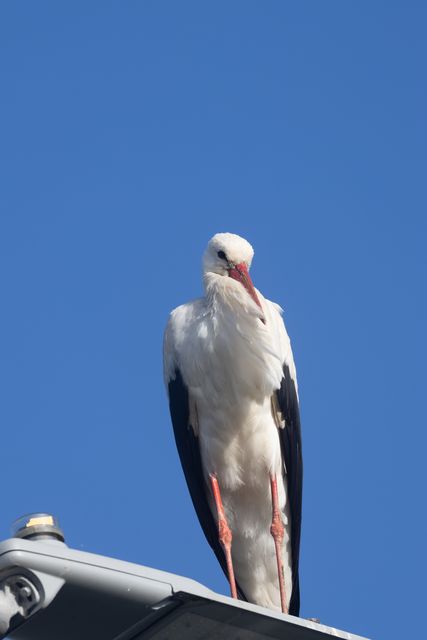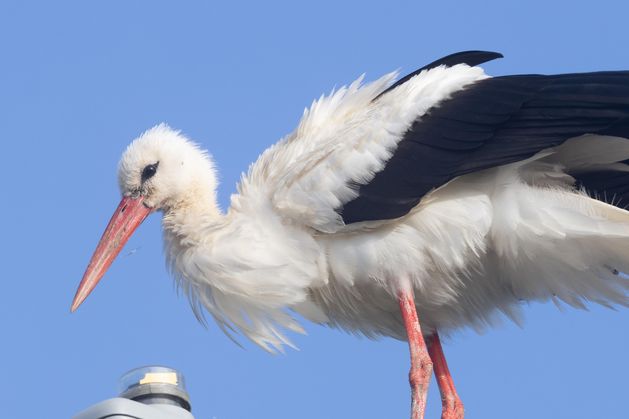White storks are uncommon in Ireland, with just 36 confirmed records existing between 1846 and 2017. From 2018 to 2024, there were no confirmed wild sightings at all.
This year, however, there have been multiple sightings in various parts of the country, including Kerry, Wicklow, Kildare and Donegal, among others.
Many of these records likely relate to the same bird or birds turning up in multiple locations, as White Storks have no problem travelling long distances, but at least two were present in Ireland at the same time.
BirdWatch Ireland member Paul Lynch captured photos of the stork – showing off its elegant white plumage and long red legs – perched gracefully on a lamppost in Lusk last Friday, August 8.
Niall Hatch, Head of Communications at BirdWatch Ireland, said the white stork was indeed a “most unexpected visitor” and generated a lot of interest amongst birdwatchers.
“The individuals that were photographed were all young birds, in their first year of life,” he said.
“Some may have travelled here from the reintroduced population in England, where the species is now breeding.
“However, it’s also very possible that some travelled over from Europe: it’s impossible to know their origins for sure.
“The white stork has been expanding its range in Europe in recent years, and some of the populations are choosing to spend the winter in Europe, rather than migrate to Africa, as they normally would.

White Stork pictured on a lamppost in Lusk. Pic: Paul Lynch
“This suggests that climate change may be influencing their behaviour, causing them not to bother undergoing the risks of migration on the basis that milder winters in Europe make it viable for them to find enough food and survive.
“It may be that climate change is also a factor in the birds’ sudden appearance in Ireland this year, but it is too early to say for certain.
“It will definitely be very interesting to see if more turn up here next year and in the years after that.”
Jez Simms, Chairperson of BirdWatch Ireland’s West Cork Branch, spoke about the recent Lusk sighting, describing the white stork as “a majestic bird, pretty big, feeding mainly in fields and open spaces”.
“They’re shy around humans, and generally there’s no risk being around them. They’re more interested in insects and grasshoppers than people,” he said.
White storks are tall birds, often reaching up to one metre in height, with long legs, broad wings and striking black-and-white plumage.
They are opportunistic feeders, dining on earthworms, insects, frogs and small mammals.
They breed in open areas such as river floodplains and grasslands, constructing enormous nests on trees, power poles, ledges, or manmade platforms.
